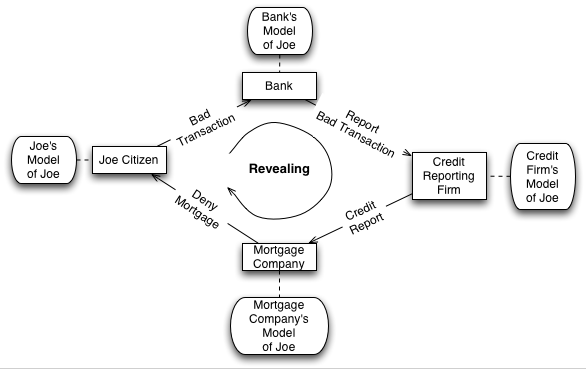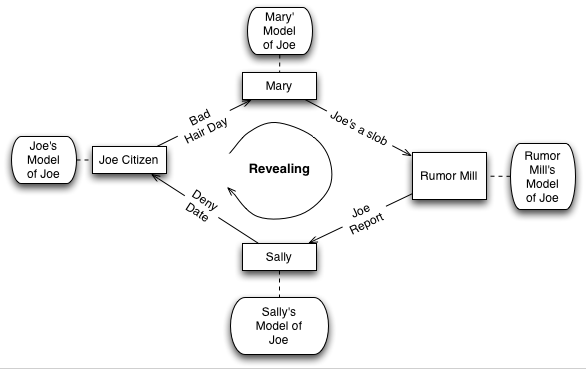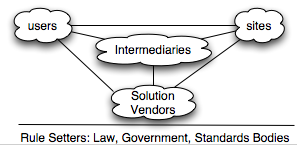Let me take a stab at solving the second of the two large problems I
see with the current TypeKey design.
The Problem
In it’s most brutal form the second problem with TypeKey is that it is
a land grab. It puts Six Apart in the position, intentionally or not,
of making exactly the same mistake that Microsoft made with Passport.
The design, presumably for simplicity, assumes that there is one
authority that everybody using TypeKey will turn to for their
authentication services; i.e. www.typekey.com. That makes
typekey.com the central authority for some universe of
authentication. Today this is blog comments. Tommorrow it might be
wiki contributions. The next day – who knows?
While at first blush this appears to be very valuable turf to grab, if
you are too greedy you destroy the value of the turf your getting.
That’s the lesson that Microsoft hopefully has learned from Passport.
Sure, you can build a system with a single central authority. Yes,
people will sign up for it. Trouble is then force other serious players
into a subordinate position. Other powerful players don’t like that.
They have no interest playing a subordinate role to you.
The second problem with having a single central authority is that it
encourages the emergance of a monopoly. While I may think very highly
of the folks at Six Apart, I don’t think so highly of them as to
believe they should be encouraged to grab a dominate role in teh
authentication of contributors of open/free content.
Solving the problem, technically, isn’t that hard. It is harder
than solving the design flaw of revealing a global unique identifier
for everybody, though.
A Solution
What is required?
Users and sites need to be able to sign up for with multiple
authentication services.
The more the merrier. In fact if you design with the presumption that
there will be a few hundred or thousands of these “authorities” that
would be best.
The TypeKey design bounces the user over to the single central authority.
In a design that avoids a single central authority the site needs to
infer one or more authorities to bounce the user over to.
The key added complexity is getting a list of these authorities before
we bounce the user over to them for authentication. This take two steps.
The simpler TypeKey design requires only one. First we lookup the
user’s perfered authorities. Secondly we ask one or more of them to
authenticate/vouch for the user.
A Possible Implementation
How to lookup the user’s perferred list of authorities?
There are lots of fanciful ideas for how to do this – most are not
practical. We might modify the installed base of web browsers so that
users could send their prefered set of authorities as part of their
browsing. We might have the user run thru a proxy server provided by
his ISP and that proxy server could insert the list of perfered
authorities.
There are two reasonably practical approaches.
First we could introduce a central authority who’s only role is to
return the user’s list of perfered authorities. The TypeKey folks
could volunteer to do that, in effect offering to redirect queries
about a given user to other authorities if that user has asked for
that.
Alternately we could use tricks involving browser cookies. Each site
would then use these cookies to get the user’s authority list. This
solution is somewhat better, at least it’s faster, than the first
solution. It has a similar design challenge that somebody would
have to manage the domain used to hold the cookies shared over all
these sites.
Neither of these solutions is too hard to implement. Both solve the
problem of enabling a single dominate vendor for the role that TypeKey
is working to fill.
One final point. I don’t believe that introducing the mechinisms will
reduce the success of TypeKey as a major player in the blog
authentication industry. In fact I suspect that making changes along
these lines will accellerate adoption because it will reduce the
paranoia that is created by making the role of authentication server
scarce.




